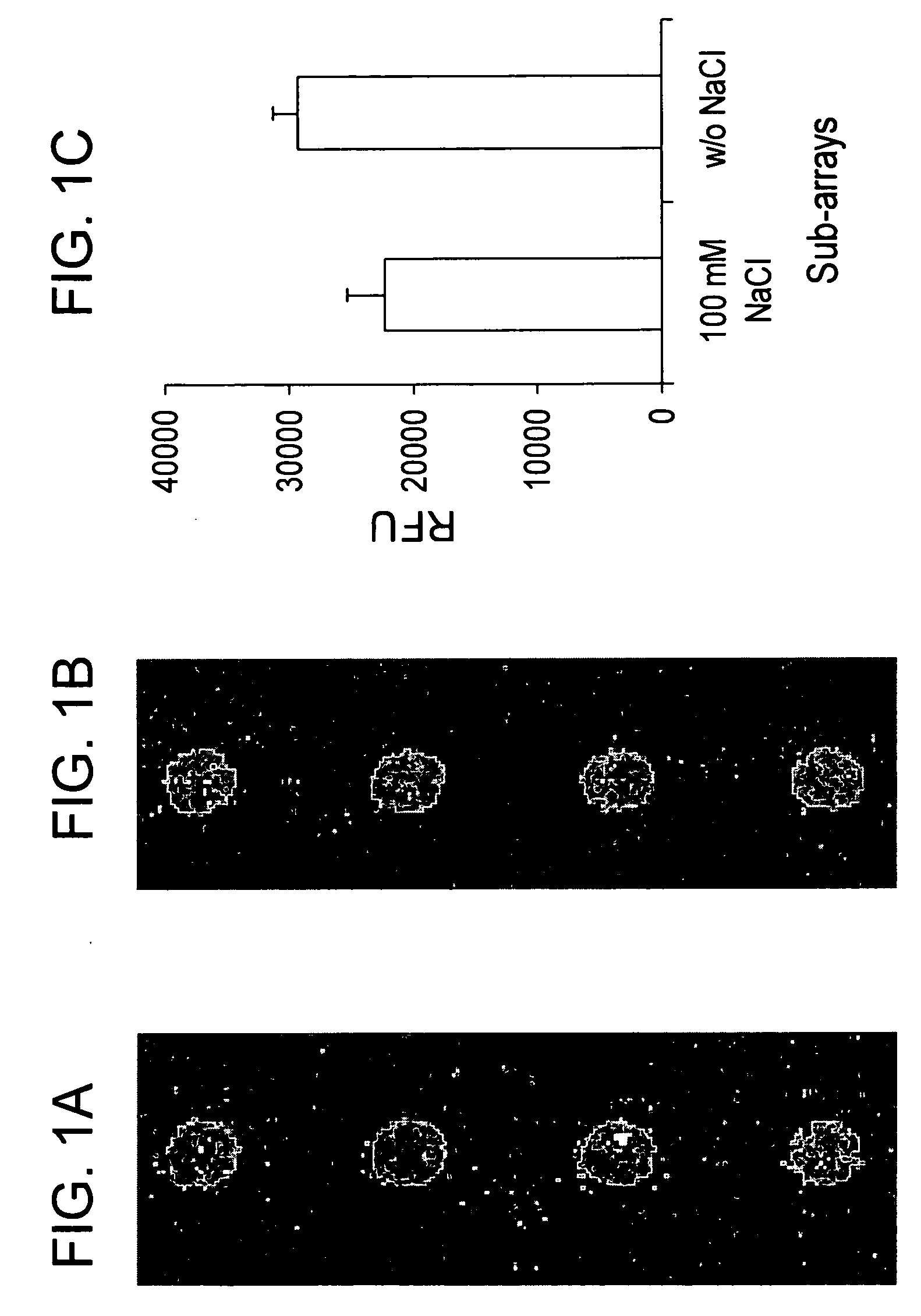Assay solution compositions and methods for GPCR arrays
a technology of arrays and compositions, applied in the field of biological assays, can solve the problems of limited structural data on gpcrs, serious side effects, and significant challenges in rational drug design
- Summary
- Abstract
- Description
- Claims
- Application Information
AI Technical Summary
Benefits of technology
Problems solved by technology
Method used
Image
Examples
Embodiment Construction
Section I—Definitions
[0025] Before describing the present invention in detail, this invention is not necessarily limited to specific compositions, reagents, process steps, or equipment, as such may vary. As used in this specification and the appended claims, the singular forms “a,”“an,” and “the” include plural referents unless the context clearly dictates otherwise. It is also to be understood that the terminology used herein is for the purpose of describing particular embodiments only, and is not intended to be limiting. All technical and scientific terms used herein have the usual meaning conventionally understood by persons skilled in the art to which this invention pertains, unless context defines otherwise.
[0026] The term “ligand” refers to a chemical molecule or biological molecule that can bind readily to a receptor with a specific binding affinity constant.
[0027] The term “labeled-ligand” refers to either a fluorescently labeled or radioactive isotope-labeled or hapten-l...
PUM
| Property | Measurement | Unit |
|---|---|---|
| pH | aaaaa | aaaaa |
| pH | aaaaa | aaaaa |
| time | aaaaa | aaaaa |
Abstract
Description
Claims
Application Information
 Login to View More
Login to View More - R&D
- Intellectual Property
- Life Sciences
- Materials
- Tech Scout
- Unparalleled Data Quality
- Higher Quality Content
- 60% Fewer Hallucinations
Browse by: Latest US Patents, China's latest patents, Technical Efficacy Thesaurus, Application Domain, Technology Topic, Popular Technical Reports.
© 2025 PatSnap. All rights reserved.Legal|Privacy policy|Modern Slavery Act Transparency Statement|Sitemap|About US| Contact US: help@patsnap.com



